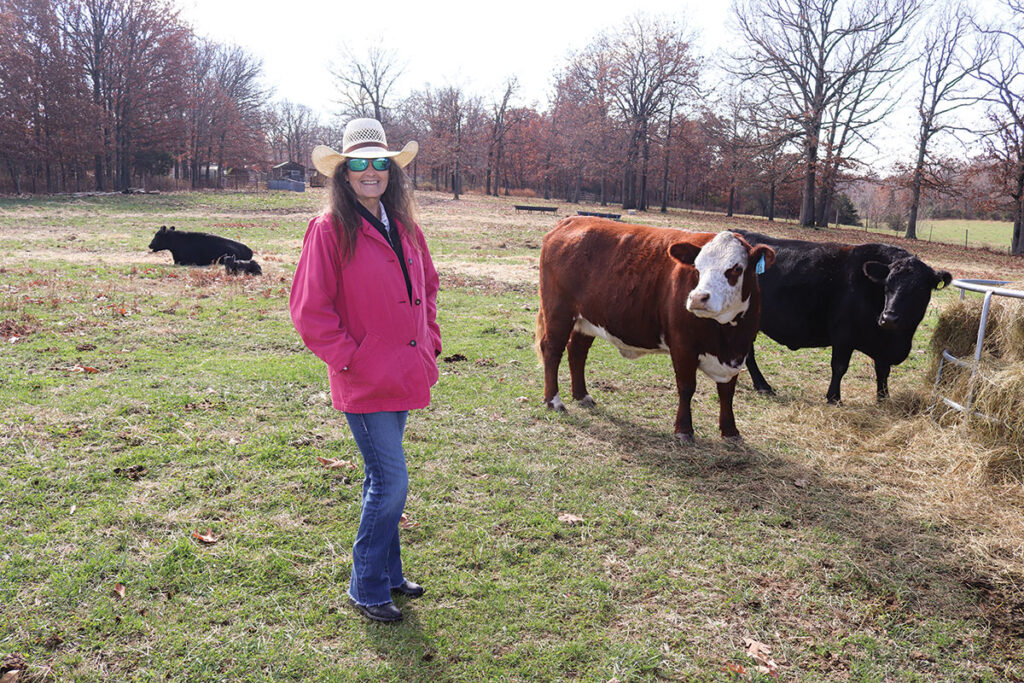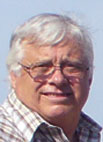
Richard Sansom and his wife Linda returned to his family’s farm and the cattle industry
PHILLIPSBURG, MO. – Roots keep a tree firmly planted. The runners can move in different directions, but they are still connected to the roots. For Richard Sansom, his roots brought him back to his native Laclede County, Mo., and back into agriculture.
“This is the place where I grew up,” he said. “We came here when I was about 5 or 6 years old, and my parents always had livestock, so I grew up around it. I started getting back into cattle in 2017, 2018.
“Raising cattle gets into your blood, and when I was in high school, I worked at the local sale barn for a few years, and I just love being around livestock.”
Richard and his wife Linda began their herd at Rockin’ S Farms with a mix of breeds, but they are moving toward registered Limousin. Three bred heifers, and a Limflex bull are the foundation for the new herd.
“We’re trying to raise quality beef cattle,” Richard said. “But we are looking toward the future, and that’s why we are getting into registered Limousin. We will retain all the heifers we can and work toward that registered herd.”
The Sansoms have opted to move to Limousin because they appreciate the docility of the breed, the calving ease, high maternal traits, and carcass yield and quality.
The Sansom herd currently consists of 20 breeding-age females on 120 acres. Because they are limited in their current acreage, Richard and Linda will replace females from their commercial herd with retained or acquired Limousin females.
“I hope in five years, or so, I have 20 head of registered, purebred Limousin cows out there,” Richard said. “Selling bulls in the future might not be out of the question.”
As they build their registered herd, they continue their commercial cow/calf operation with the same focus on raising quality cattle and cattle that are easy to work.
“I am still working full-time, so Linda is my full-time, right-hand person, ranch manager,” Richard said. “The last thing I want is for one of my animals to hurt her.”

Because Richard and Linda do the herd work alone, they built a low-stress corral system for both them and the cattle, complete with indoor working facilities and pull-through loading and unloading.
“We go slow,” Richard said. “We can work all the cows and calves in 2 1/2 hours.”
Richard and Linda have a designated breeding window for their herd.
“We pull the bull out on March 17 and put him back in the first of June,” Richard said. “We want to avoid calving in January and February. We have some young calves now, but most of the herd will calve from the middle to the end of March.”
Once calves are weaned, they move to full feed for 14 to 45 days.
“We get them started on a bulk calf mix, which is a medicated feed,” Richard said. “I might stretch that out to 60 days because that’s the way the market is going. Buyers want those longtime weaned calves, and they can tell the difference; they buy calves every day. As far as the cost ratio, I don’t know, but when they go through the ring, more people are bidding on them, and that’s what matters to me.”

The mature herd receives some grain on the coldest winter days, but it’s usually reserved to keep the cattle coming up with little effort. Cattle receive supplements based on the time of year, including IGR during fly season, which is aided with pour-on and rubs.
At this time, bull calves are banded shortly after birth, which the Sansoms feel is the less stressful approach. Calves are vaccinated in the spring and at weaning. The mature herd is vaccinated in the spring, which includes a pinkeye vaccine.
Cattle are rotated between pastures depending on forage growth, but Richard said they are careful not to overgraze.
“It’s something we’re working on,” he said of the pastures, adding he has a strong stand of clover, fescue and some native grasses. The Sansoms lease additional property for hay production.
The transformation to registered cattle is part of Richard’s retirement plan, but getting back to his roots has been years in the making. Richard is a lieutenant at an area police department. Departmental policy has dictated that officers live within a certain area to expedite response times for most of Richard’s career. That policy changed earlier this year, allowing Richard and Linda to move to the farm.
“I was driving down three or four days a week to check cows, fix fence and do whatever needed to be done,” Richard said. “It’s flip-flopped, and I’m driving there five days a week, but it has taken a lot of stress off me. There would be times I would work a 12-hour day, then run down here to check cows. Selling my house and moving back to the farm was the best thing I ever did. Now, I want to get my genetics and my herd where I want them.”
“We don’t have to worry about things because we are here. [Richard] is much more relaxed than he was; he was always on the job,” Linda said.
“This is my place to relax,” Richard added. “I might be out here building fence, but I’m relaxed. This is where I come to unwind and recharge. This is home, where I want to be and where I’m going to stay,” Richard said. “You can’t pry me away from here.”







